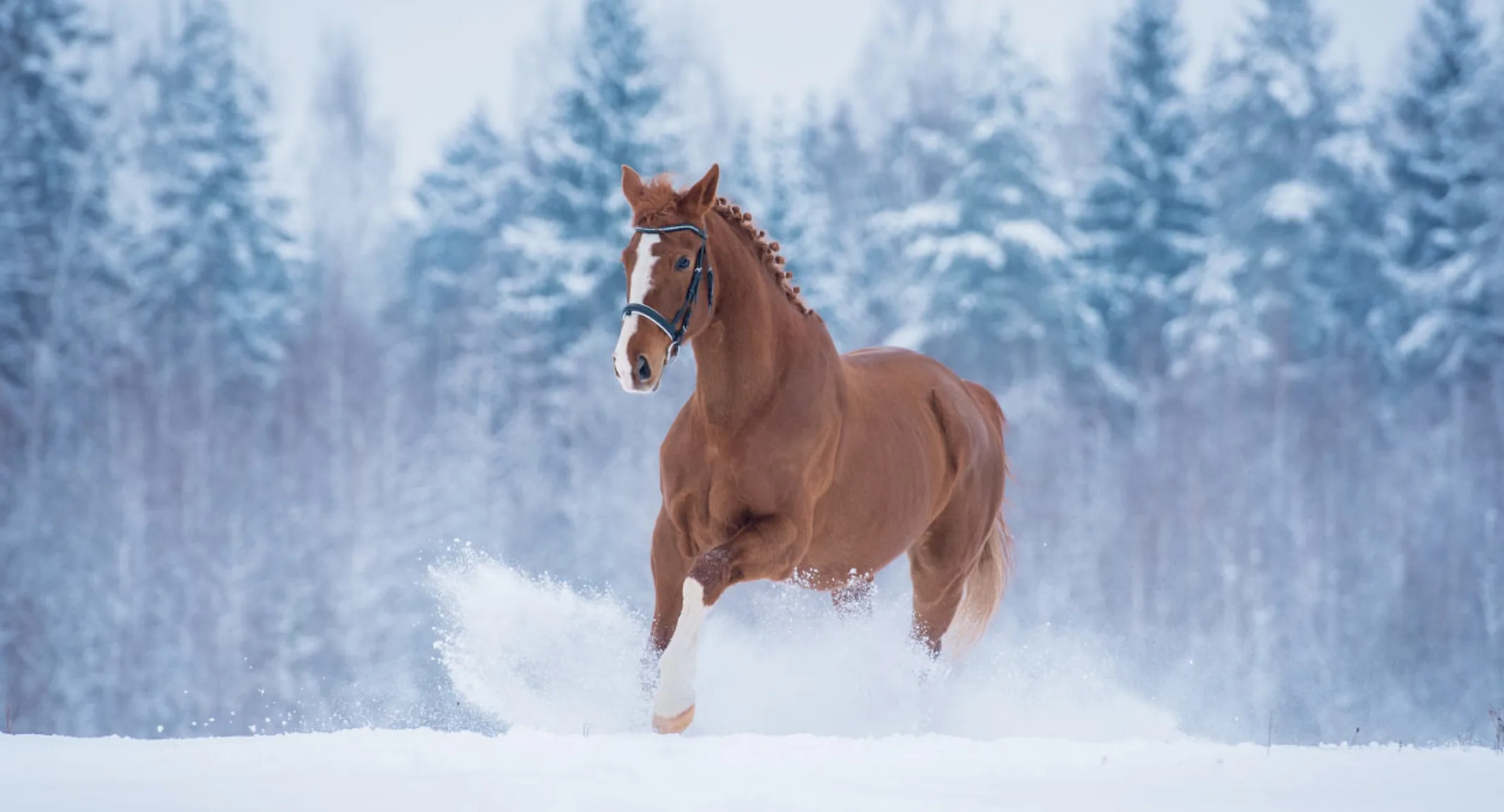Winter Horse Care
General

Once the weather is cold and snow and ice need to be dealt with, there are some extra precautions that you need to take to keep your horses safe and happy. Although horses are better at dealing with the cold than we are, they still need some help in the winter. First, always make sure that your horse has a clean, fresh source of unfrozen water at all times.
Ideally, a water trough heater, heated automatic waterer, or heated water bucket will provide water at a comfortable temperature for your horse to drink. If these options aren’t possible, always make sure that any ice on the water is broken and completely removed from the horse’s water source at least twice daily. Uncomfortably cold water or frozen water troughs will dramatically decrease the horse’s water consumption. The resulting slight to moderate dehydration can cause a possibly life-threatening impaction colic.
Generally, snow, no matter how deep, is not often a danger to your horse’s well-being. In fact, most horses love to play in fresh snow and will repeatedly paw, roll, and romp. It’s time for concern, though, if your horse is shod. In that case, the snow can ball up in the center of his shoes causing him to look as if he’s walking in high heels. This isn’t a problem in the snow but becomes dangerous once the horse is brought onto a hard surface such as a driveway or barn aisle. The snow build-up is very slick, and the horse is in danger of slipping, falling, or straining a tendon. To remove the snow balls, pick up your horse’s foot and tap very firmly on the outside edge of the shoe with a hammer. After a few taps, the snowball should fall right out. Ice, on the other hand, poses a serious threat to your horse at all times. Whether they are shod or not, horses cannot get traction on ice. They are in danger of falling and severely injuring themselves if they are turned out or walked on icy surfaces. If your pastures are icy, do not turn out your horses until the ice has thawed. Alternatively, you can spread manure, dirty bedding, or kitty litter over the icy surfaces upon which your horses must walk. This may delay the melting of the ice, but it will definitely improve the traction on that surface.
If you work your horses hard enough during the cold winter weather, they will sweat. And if they sweat, they are in danger of getting chilled after they’re done working. One way to prevent excess sweating is to either body-clip or trace-clip your horse. Although the horse will still sweat, he will dry much more quickly and is less likely to get chilled. If this isn’t feasible, you need to take some action to make him comfortable and help him cool out more quickly. After untacking, briskly rub the wet spots with a towel to remove excess sweat then curry the horse. By “roughing up” the coat with the curry, you are allowing air to circulate under the hair to promote drying. Next, place a wool or polar fleece cooler on the horse. This will keep his body warm and draw the remaining moisture out of the coat and to the outside of the cooler. Generally, the horse should be dry in about 30 minutes unless he was very wet when he got done working. Do not put a blanket on the horse until his coat is completely dry. If you do, the moist conditions under the blanket will make the horse prone to getting chilled (as you would if you were wearing wet clothes out in the cold weather) and to skin conditions such as rain rot.
Horses generate a great deal of body heat during the digestion of hay and other long stem forage. The heat generated by the digestion of the hay keeps the horses warm during the cold winter months. For this reason, it is imperative that horses kept outside during the winter receive free choice good quality hay. If you tend to your horse carefully during the winter, both of you will enjoy the season so much more.
Michelle Egli, DVM
Delmarva Equine Clinic
